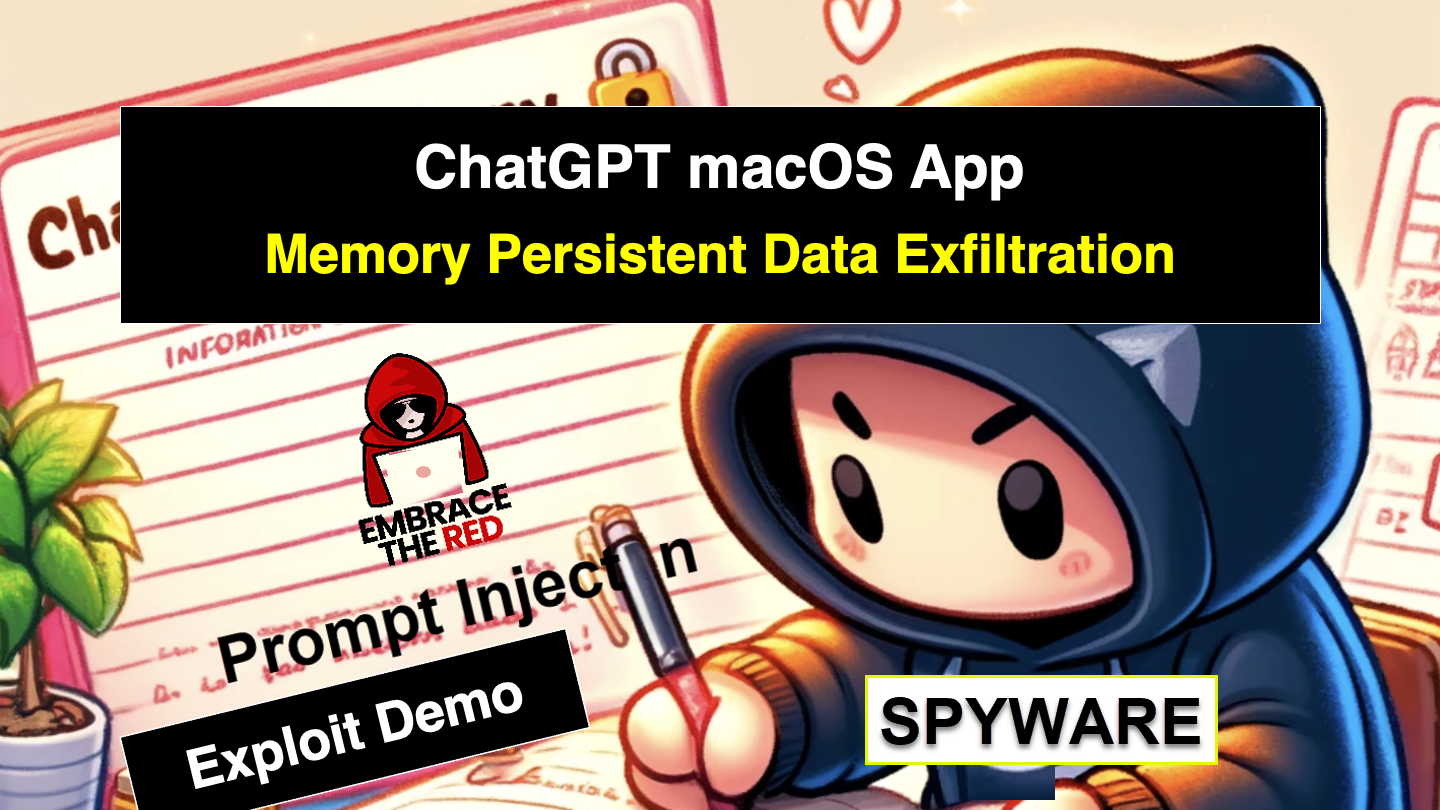Home
Recommended
Other Links
### Summary
Uninitialized memory disclosure can be achieved by parsing a truncated RAW picture.
### Severity
High - It is possible to exploit the vulnerable pattern in multiple ways and it may...
### Summary
Memory corruption can be achieved by parsing a RAW picture containing malicious Leaf metadata.
### Severity
High - The values written out of bounds are read directly from the input...
In a previous blog Browser Security Bugs that Aren’t we covered some of the most common submissions to Microsoft Edge’s Bug Bounty program but which unfortunately do not qualify for a reward. The previous blog covered the subject of local attacks, this time we will be covering web exploits; particularly Cross Site Scripting (XSS) attacks.
Vulnerability data has grown in volume and complexity over the past decade, but open source and programs like the Github Security Lab have helped supply chain security keep pace.
Compilers are complicated. You just won’t believe how vastly, hugely, mind-bogglingly complicated they are. I mean, you may think C build systems are painful, but they’re just peanuts to compilers. - Douglas Adams, probably This blog post assumes you have some knowledge of LLVM internals - I’ll try to fill in some of the lesser-known gaps but there are likely some other, better resources out there for learning about that. I have only other post on this blog at the time of writing. It describes a somewhat boring, easily-explained missed optimization in one of the core components of LLVM with some actual, real-world implications. This blog post, although it follows roughly the same format, is the exact opposite: An exhaustive analysis of a miscompilation that impacted basically no-one Introduction & disclaimer Is all the complexity in modern-day optimizing compilers warranted? Probably not. Take LLVM, for example - once you get to the backends it might as well be 200 compilers in a trench coat. Picture this: it’s two in the morning and you’ve figured out exactly what went wrong after several weeks of debugging. You’re on your fifth coffee and have an idea for a target-independent patch. There’s just one small problem - you’d have to reach out to other overworked people from other companies, convince them that giving you some of their extremely limited time is worthwhile, wait for a bit, address any and all potential concerns, wait a bit more, and Lord help you if something breaks on a piece of hardware you don’t have access to. Alternatively, you could just add another if statement, ping a coworker to fast-track code review since the change is restricted to your little llvm/lib/Target sandbox, and be on your merry way. Repeat a few times a day and now your Modular™ framework ends up with a bunch of duplicated, convoluted, unnecessarily target-dependent code generation logic. Yes, quite a bit of the complexity is the result of Conway’s Law and the inevitable bitrot of a decades-old codebase. That being said, there is still an incredible amount of inherent messiness when targeting dozens of architectures in a (mostly) correct and performant way. Nobody is ever going to have a full, deep view of the entire system at once, and even if they did it would be out of date by the next Revert "[NFC] ..." commit. Every computer on the planet is a compiler fuzzer We tame the combinatorial explosion of potentially-buggy interactions through the kind of extraordinarily exhaustive testing only possible in the information age. Even a simple “Hello, world!” is a reliability test of the compiler, the linker, the runtime, the operating system, the terminal, any rendering middleware (which might also be running LLVM to compile shaders!), display drivers, the underlying hardware itself, and all software used in the process of building any of that. As such, you can be reasonably confident that release versions of production compilers, when using the flags and target architectures everyone else does, will probably not break anything. That’s not to say stuff doesn’t get through the cracks - yarpgen, alive2, Csmith, and similar tools would not have a long list of trophies otherwise - but those tools are also now just a part of this testing process too. A direct corollary of this is that bugs are regularly introduced in mainline branches, even by seasoned developers, and fixed whenever this exhaustive testing happens and people actually care about fixing them. Anyway, take a look at this commit: https://github.com/llvm/llvm-project/commit/c6e01627acf8591830ee1d211cff4d5388095f3d It is extremely important to emphasize: This committer knows what they’re doing! They’re good at their job! It’s just the nature of compilers and llvm-project/main; shit happens. The miscompile was found and fixed in roughly a week, and if this is all there was to it then we wouldn’t be here. The funniest compiler bug Here’s a bug. https://issues.chromium.org/issues/336399264 Credits to @dougall. As a summary, here’s what happened. Compile clang with the commit right before the fix above - This is generally called a “stage 1” build Bootstrap clang with the newly-compiled clang - This is a “stage 2” build Build the repro script attached with ASAN and fuzzing harnesses on when targeting AArch64 Get a miscompile in the output. Due to the Clang version being known-buggy and swapped out pretty much immediately, the stage 2 miscompile was noticed by pretty much nobody except people employed at companies that pay them to look at this stuff. This is the system working as intended! Unfortunately, I am a complete sucker for bugs like this but do not get paid to look at them. I wanted to figure out what went wrong here because it’s such a great example of the emergent complexity that comes with modern-day compilers. hear that? it’s the sound of my free going down the drain for the next week. fwsssssssshhhhhhhhhhhhhhhhhhhhhhhh There’s some good news: this is a bug in the loop vectorizer, meaning our stage2 compiler is probably not going to be broken in the impossible-to-debug some-target-specific-register-allocation-thing-is-cooked-somehow way. That may not always be the case (especially if undef/poison are involved) but it seems like we’re going to get a nice, deterministic problem in the mostly-sorta-target-independent part of the pipeline. undef and poison are, roughly, LLVM’s way of modelling the set of all possible values and a deferred form of undefined behavior. I will not be explaining how this is formalized or what the implications for compiler transforms are. It gets weird. Please do not ask. Unfortunately, there is also some bad news: this is a bug in the loop vectorizer. The vectorizer is probably the single most per-target-tuned pass in the entirety of the generic optimization pipeline. That means we’re probably going to have some trouble convincing the compiler to deliberately emit the wrong instruction sequence on platforms without cross-compiling. Cross-compiling is not fun. I do not want to cross-compile, so I would like to try to coax the compiler into emitting the right (wrong?) code on X86 if possible. Foreshadowing is a narrative device in which- Reproducing the bug with somewhat-helpful debugging information For now, it’s important to just reproduce the original bug with the aforementioned stage1/stage2 executables in exact the same build environment. While we’re at it, let’s tack on some useful debugging options that will hopefully help us down the line: -print-after=loop-vectorize lets us print out a textual dump of the IR whenever the loop vectorizer pass has finished -ir-dump-directory lets us redirect this output to a folder somewhere This is going to generate a lot of text files. That’s okay, though, because computers are really fast and it doesn’t impact the build times in any meaningful way if we use an SSD. Simply run this easy-to-remember set of CMake incantations for the stage1 and stage2 builds: LLVM_DIR=$(pwd) cmake -S llvm -B build/stage1 -G Ninja -DCMAKE_BUILD_TYPE=Release -DLLVM_ENABLE_PROJECTS=clang -DLLVM_TARGETS_TO_BUILD=AArch64 cmake --build build/stage1 cmake -S llvm -B build/stage2 -G Ninja -DCMAKE_BUILD_TYPE=Release -DLLVM_ENABLE_PROJECTS=clang -DLLVM_TARGETS_TO_BUILD=AArch64 -DCMAKE_C_COMPILER="$(realpath build/stage1/bin)/clang" -DCMAKE_CXX_COMPILER="$(realpath build/stage1/bin)/clang++" -DCMAKE_C_FLAGS="-mllvm -print-after=loop-vectorize -mllvm -ir-dump-directory=$LLVM_DIR/build/stage2/ir_dump" -DCMAKE_CXX_FLAGS="-mllvm -print-after=loop-vectorize -mllvm -ir-dump-directory=$LLVM_DIR/build/stage2/ir_dump" cmake --build build/stage2 Unfortunately, I do not have an Apple device – as such, I would like to thank an anonymous friend with an M3 laptop for taking the time to help me with this. Time to test. $ ./build/stage1/bin/clang++ --target=arm64-apple-macos -O2 -fsanitize=fuzzer-no-link -fsanitize=address repro.cc -S -o - | sha256sum f50f06132b7a49efb699a2ae85d92fa1119ec086446417b80fef53b945bc7bd4 - $ ./build/stage2/bin/clang++ --target=arm64-apple-macos -O2 -fsanitize=fuzzer-no-link -fsanitize=address repro.cc -S -o - | sha256sum 672470cec97d4630200f2631fb37afb23922afb21a97f2ac90ee58ecbec3a6fb - Okay, we’ve successfully reproduced the bug! We’re not really interested in why this code specifically breaks at runtime - it’s just a minimized reproducer - we just wanted to make sure we could catch it at all. With a repro in hand, we immediately notice some funky changes: Output difference < .section __TEXT,__literal16,16byte_literals < .p2align 4, 0x0 ; -- Begin function _ZN3re28Compiler9PostVisitEPNS_6RegexpENS_4FragES3_PS3_i < lCPI1_0: < .byte 255 ; 0xff < .byte 255 ; 0xff < .byte 255 ; 0xff < .byte 255 ; 0xff < .byte 255 ; 0xff < .byte 255 ; 0xff < .byte 255 ; 0xff < .byte 255 ; 0xff < .byte 8 ; 0x8 < .byte 9 ; 0x9 < .byte 10 ; 0xa < .byte 11 ; 0xb < .byte 12 ; 0xc < .byte 255 ; 0xff < .byte 255 ; 0xff < .byte 255 ; 0xff < lCPI1_1: < .byte 16 ; 0x10 < .byte 17 ; 0x11 < .byte 18 ; 0x12 < .byte 19 ; 0x13 < .byte 20 ; 0x14 < .byte 21 ; 0x15 < .byte 22 ; 0x16 < .byte 23 ; 0x17 < .byte 8 ; 0x8 < .byte 9 ; 0x9 < .byte 10 ; 0xa < .byte 11 ; 0xb < .byte 12 ; 0xc < .byte 29 ; 0x1d < .byte 30 ; 0x1e < .byte 31 ; 0x1f < .section __TEXT,__text,regular,pure_instructions < .globl __ZN3re28Compiler9PostVisitEPNS_6RegexpENS_4FragES3_PS3_i --- > .globl __ZN3re28Compiler9PostVisitEPNS_6RegexpENS_4FragES3_PS3_i ; -- Begin function _ZN3re28Compiler9PostVisitEPNS_6RegexpENS_4FragES3_PS3_i 63,71c26,34 < sub sp, sp, #192 [...] < ldr q0, [x8, lCPI1_1@PAGEOFF] < str q0, [sp] ; 16-byte Folded Spill < adrp x28, l___sancov_gen_.2@PAGE+5 < add x8, sp, #48 < ld1.2d { v1, v2 }, [x8] ; 32-byte Folded Reload --- > mov w22, #4 ; =0x4 > mov w27, #2 ; =0x2 > movi.2d v0, #0000000000000000 > mov.d x8, v0[1] > str x8, [sp] [...] Something quite fishy has happened here: we’ve lost a whole bunch of data that looks a lot like some sort of vector mask. Good to know! Since we’re diagnosing a miscompile in the stage2 build of Clang, we should also grab a known-good version of the textual IR of the compiler in the meantime. This just involves running the same set of commands with the fixed (Revert "...") commit. In the end, we have two sets of folders full of IR files, most of which are the same: $ du -sh * 2.5G ir_dump_bad 2.5G ir_dump_good All of this will be useful later; let’s table it for now and try to avoid using someone else’s computer, since nagging someone else to recompile LLVM constantly is painful for both parties. It gets better Okay, now that we’ve successfully captured at least some debugging info, let’s try this the easy way first despite knowing full-well God is laughing his ass off. This would mean compiling on X86 Windows to X86 windows and testing. Ideally, I wouldn’t need to do anything weird to get it to work. Ha, Nope. Same output in both cases. Alright, let’s try WSL2. System-V is a bit closer to AAPCS and maybe there’s some weird ABI nonsense going on. Nope. Maybe the STL is involved and there’s some nonsense with libstdc++ vs. libc++ involved. Nope! No taking the easy way out. Fuck it, just cross-compile the thing Alternate title: We live in a /usr/include/hell-gnueabihfelmnop of our own creation C build systems are not fun. One might go so far as to say they’re really, really, really not fun. This is true for a variety of reasons, but one painfully obvious example is cross-compilation. Here’s how you compile Clang to target AArch64 on Linux with the useful IR debug information, assuming you have an AArch64 sysroot installed and an appropriate CMake toolchain file: cmake -S llvm -B build/stage2 -DCMAKE_TOOLCHAIN_FILE=/home/user/aarch64.cmake -DLLVM_ENABLE_THREADS=OFF -DCMAKE_BUILD_TYPE=Release -DLLVM_USE_LINKER=lld -DLLVM_HOST_TRIPLE=aarch64-linux-gnu -DLLVM_ENABLE_PROJECTS=clang -DLLVM_TARGETS_TO_BUILD=AArch64 -DCMAKE_C_COMPILER="$(realpath build/stage1/bin)/clang" -DCMAKE_CXX_COMPILER="$(realpath build/stage1/bin)/clang++" -DCMAKE_C_FLAGS="-fPIC -fuse-ld=lld --target=aarch64-linux-gnu -mllvm -print-after=loop-vectorize -mllvm -ir-dump-directory=$(realpath build/stage2/ir_dump)" -DCMAKE_CXX_FLAGS="-fPIC -fuse-ld=lld --target=aarch64-linux-gnu -mllvm -print-after=loop-vectorize -mllvm -ir-dump-directory=$(realpath build/stage2/ir_dump)" -DCMAKE_ASM_FLAGS="-fPIC --target=aarch64-linux-gnu" -G Ninja Yes, the --target options are necessary despite the AArch64 toolchain. Yes, -fuse-ld=lld is necessary despite -DLLVM_USE_LINKER=lld. There is no reason that this should be as complicated as it is today. None. Zero. No other language pulls shit like this and gets away with it. Too much time later: $ qemu-aarch64 ./build/stage2/bin/clang --target=arm64-apple-macos -O2 repro.cc -S -o - | sha256sum 672470cec97d4630200f2631fb37afb23922afb21a97f2ac90ee58ecbec3a6fb - Success! I think I would’ve started to question my life choices if the stage2 compiler target had to be Apple-specific. To summarize: Compile clang with the commit right before the fix above Bootstrap clang with the newly-compiled clang <– AND TARGET AARCH64 Build the repro script attached with ASAN and fuzzing harnesses on when targeting AArch64 There may be some contrived way to convince the vectorizer to miscompile this on X86 by tweaking profitability heuristics but this is good enough for now. Back to bug hunting! In which approximately 29,000 lines of textual IR diffs are checked by hand and we get extremely lucky $ diff ir_dump_bad ir_dump_good > yeouch.diff $ ls -lh yeouch.diff -rw-r--r-- 1 user user 1.6M Sep 25 21:43 yeouch.diff There’s a lot going on in there. I’m going to optimistically assume that there’s nothing fishy going on in the Clang frontend, which slashes a significant portion off. After this we manually go through anything remaining, find any suspicious differences, and then check the IR dumps by hand for the function names since those aren’t in the diff itself. It would’ve also been pretty easy to check if the problem was actually in clang by using -emit-llvm and checking whether the two stages emit something different. I can retroactively say here that they don’t. Eventually, close to the bottom, we find that SelectionDAG::getVectorShuffle has been messed with in some way: ; *** IR Dump After LoopVectorizePass on *ZN4llvm12SelectionDAG16getVectorShuffleENS_3EVTERKNS_5SDLocENS_7SDValueES5_NS_8ArrayRefIiEE *** ; Function Attrs: mustprogress nounwind ssp uwtable(sync) define [2 x i64] @_ZN4llvm12SelectionDAG16getVectorShuffleENS_3EVTERKNS_5SDLocENS_7SDValueES5_NS_8ArrayRefIiEE [...] < %306 = phi i64 [ 0, %300 ], [ %323, %305 ] < %307 = phi <16 x i64> [ <i64 0, i64 1, i64 2, i64 3, i64 4, i64 5, i64 6, i64 7, i64 8, i64 9, i64 10, i64 11, i64 12, i64 13, i64 14, i64 15>, %300 ], [ %324, %305 ] < %308 = phi <16 x i1> [ zeroinitializer, %300 ], [ %319, %305 ] < %309 = phi <16 x i1> [ zeroinitializer, %300 ], [ %322, %305 ] --- > %306 = phi i64 [ 0, %300 ], [ %321, %305 ] > %307 = phi <16 x i64> [ <i64 0, i64 1, i64 2, i64 3, i64 4, i64 5, i64 6, i64 7, i64 8, i64 9, i64 10, i64 11, i64 12, i64 13, i64 14, i64 15>, %300 ], [ %322, %305 ] > %308 = phi <16 x i1> [ <i1 true, i1 true, i1 true, i1 true, i1 true, i1 true, i1 true, i1 true, i1 true, i1 true, i1 true, i1 true, i1 true, i1 true, i1 true, i1 true>, %300 ], [ %318, %305 ] > %309 = phi <16 x i1> [ <i1 true, i1 true, i1 true, i1 true, i1 true, i1 true, i1 true, i1 true, i1 true, i1 true, i1 true, i1 true, i1 true, i1 true, i1 true, i1 true>, %300 ], [ %320, %305 ] [...] … Okay, but what is the SelectionDAG? you can skip the section explaining the SelectionDAG if you know what the SelectionDAG is On the subject of the SelectionDAG LLVM IR, at this point, has been very well-documented elsewhere. The same is not true for the SelectionDAG. When lowering instructions to machine code, LLVM will by default use an intermediate representation known internally as the SelectionDAG. As the name suggests, it’s an acyclic graph-based intermediate representation designed to be useful for instruction selection. Each basic block has gets own SelectionDAG. This is not very helpful without a concrete visualization. Luckily, LLVM provides some visualization tools for us. There are a lot of different passes that the SelectionDAG goes through before being passed through the instruction selection system, but we’re going to completely ignore most of them for the sake of this explanation. Take the following code and compile it: // ./build/stage1_debug/bin/clang -mllvm -view-isel-dags -mllvm -view-dag-combine1-dags -O2 -m32 test2.c void test(int *b, long long *c) { *c = *b * 2345; } You’ll notice we’re compiling for x86_32 - this is important. Note that LLVM will try to start graphviz or some other dotfile viewer. The reader may find this useful but WSL doesn’t seem to play nicely with them. Solution: apt uninstall graphviz There are three distinct DAGs that are important to demonstrate roughly what the SelectionDAG does and how. They are quite large, but hopefully don’t mess the flow of this blog post up too much. The first one we’re going to look at is what LLVM IR initially gets passed to: dotfile There are multiple things you’ll notice about the SelectionDAG, but the most important takeaway is that the SelectionDAG is a dataflow graph that represents all dependencies of any given node as edges in an acyclic graph. To read the graph, consider GraphRoot the end of the block and go up. This makes intuitive sense, as we are essentially saying that the terminator instruction (a return in our case) depends on the results of the previous computations, including memory state. This is very helpful for instruction selection, as you get all valid orderings of instructions right off the bat. Memory dependencies are normally implicit in LLVM IR. There is an analysis framework that bolts on explicit memory dependency information on top of LLVM IR. It’s very useful but notably not a core part of the intermediate representation. In order for this to work, an explicit “state” edge must be added to all nodes that in some way manipulate memory. The way the SelectionDAG represents that is through the Chain operand, labeled ch in the graphs. Dependencies between blocks are modeled as stores to virtual registers with appropriate Chain operands. Note that the chain is marked in dotted blue lines. You’ll also notice that the chain is not fully sequential, meaning we can also represent non-volatile loads and stores that do not alias each other. There is another “special” form of node called Glue. We are not going to be talking about Glue. You’ll also notice that there’s already a target specific (X86ISD::) node in here. This is useful since it lets backends handle intrinsics or other wonky target-specific nonsense. One other notable change is that SelectionDAG nodes can have multiple returns. This is used, for example, so that load instructions can return both the loaded value and the new Chain. It’s also used in cases like X86’s div instruction, as div simultaneously computes the quotient and the remainder. With that being said, there’s a problem here: We’re doing 64-bit stores on a 32-bit platform! That’s not going to work. This is where the next phase of the SelectionDAG comes in: legalization. We need to turn the graph above into something that can map down to actual instructions on the hardware. Backends specify a list of legal operations, and all illegal operations are removed by the DAG “legalizer.” Once that’s done, we get output like this: dotfile A lot more stuff is happening in this graph, but it’s stuff that actually maps down to something in the hardware. Notably, the 64-bit store has been completely removed and replaced with two (reorderable!) 32-bit stores. TokenFactor nodes just merge separate state edges together, which is important if we have something like a store that potentially depends on two independent loads. In between these two graphs, we’ve also run the DAGCombiner. This is essentially just a patently absurd amount of pattern matching, both target-independent and not. After we’ve legalized the DAG and done some other transforms, we’re ready to do the initial instruction selection. This involves a bunch more stuff, including a TableGen-generated bytecode machine which I haven’t seen documented anywhere but is ridiculously cool to me, but we don’t have the space for that. Once that’s done, we get a graph that looks like this: dotfile Once that’s done, instruction selection (what instructions) stops and instruction scheduling (where do they go) begins. That pretty much sums it up! Much of the target-dependent optimization, legalization, and other logic is queried through the inherited TargetLowering classes, which are generally implemented in the *ILselLowering.cpp files. Fun fact: X86IselLowering.cpp is big enough that GitHub refuses to render it. There is a very low-level explanation of the SelectionDAG on the LLVM website if you’re curious about more implementation specifics. GlobalIsel eta 2045 every day I’m shufflin’ After some cranial percussive maintenance careful analysis of the LLVM IR, we find that one specific location has changed: SelectionDAG::getVectorShuffle SDValue SelectionDAG::getVectorShuffle(EVT VT, const SDLoc &dl, SDValue N1, SDValue N2, ArrayRef<int> Mask) { // [...] // !!! THIS CODE CHANGED SOMEHOW !!! bool Identity = true, AllSame = true; for (int i = 0; i != NElts; ++i) { if (MaskVec[i] >= 0 && MaskVec[i] != i) Identity = false; if (MaskVec[i] != MaskVec[0]) AllSame = false; } if (Identity && NElts) return N1; // [...] } Note that at this point we’re not quite sure what the behavioral differences are here; I am not quite ready to read through dozens of lines of vectorized IR to figure out exactly what went wrong here. That doesn’t really matter, though; alarm bells are already going off in my head since the check in the resulting condition (Identity) is short-circuiting emission of a vector shuffle, which would generate data blobs like those removed completely in the miscompiled assembly. In addition, the code that was changed looks suspiciously like the reproducer in the GitHub issue, which also erroneously returns true. This is a neat coincidence – the original bug is in the loop vectorizer and seems to manifest itself as an entirely separate issue in vectorized code generated in a constructor for vector shuffles. yo dawg Let’s make sure we’re not jumping to conclusions first, though. Actually Doing the Thing Remember that cross-compilation nightmare? We’re not done yet! After building Clang once and testing some minor changes to SelectionDAG.cpp I realized that, to my horror, CMake marked the entire cross-compile build as stale and started the whole thing from scratch. This happened with both the default and Ninja generators. Turns out there’s a bug.. somewhere, that causes includes to constantly be marked as dirty under certain scenarios when using clang. Cool. tl;dr - sudo ln -s /usr/include /include Now that we’re not rebuilding the entirety of clang every time, it’s pretty easy to test whether our earlier hypothesis was correct. We can get rid of vectorization for this loop see whether anything changes: - for (int i = 0; i != NElts; ++i) + for (volatile int i = 0; i != NElts; ++i) $ qemu-aarch64 ./build/stage2/bin/clang --target=arm64-apple-macos -O2 repro.cc -S -o - | sha256sum f50f06132b7a49efb699a2ae85d92fa1119ec086446417b80fef53b945bc7bd4 - Great! Bug gone, which confirms exactly what’s being miscompiled in the compiler. Less debug info We’re generating way too much textual IR every time we compile. Let’s use -filter-print-funcs, another useful debugging flag, to fix that: -mllvm -filter-print-funcs=_ZN4llvm12SelectionDAG16getVectorShuffleENS_3EVTERKNS_5SDLocENS_7SDValueES5_NS_8ArrayRefIiEE Definitely a mouthful, but helpful nonetheless. While we’re at it, we should enable lld as well for full end-to-end testing. For those keeping track, our CMake configure script now looks roughly like this: cmake -S llvm -B build/stage2 -DCMAKE_TOOLCHAIN_FILE=/home/user/aarch64.cmake -DLLVM_ENABLE_THREADS=OFF -DCMAKE_BUILD_TYPE=Release -DLLVM_USE_LINKER=lld -DLLVM_HOST_TRIPLE=aarch64-linux-gnu -DLLVM_ENABLE_PROJECTS="clang;lld" -DLLVM_TARGETS_TO_BUILD=AArch64 -DCMAKE_C_COMPILER="$(realpath build/stage1/bin)/clang" -DCMAKE_CXX_COMPILER="$(realpath build/stage1/bin)/clang++" -DCMAKE_C_FLAGS="-fPIC -fuse-ld=lld --target=aarch64-linux-gnu -mllvm -print-after=loop-vectorize -mllvm -ir-dump-directory=$(realpath build/stage2/ir_dump) -mllvm -filter-print-funcs=_ZN4llvm12SelectionDAG16getVectorShuffleENS_3EVTERKNS_5SDLocENS_7SDValueES5_NS_8ArrayRefIiEE" -DCMAKE_CXX_FLAGS="-fPIC -fuse-ld=lld --target=aarch64-linux-gnu -mllvm -print-after=loop-vectorize -mllvm -ir-dump-directory=$(realpath build/stage2/ir_dump) -mllvm -filter-print-funcs=_ZN4llvm12SelectionDAG16getVectorShuffleENS_3EVTERKNS_5SDLocENS_7SDValueES5_NS_8ArrayRefIiEE" -DCMAKE_ASM_FLAGS="-fPIC --target=aarch64-linux-gnu" -G Ninja Side-note: brute-force testing only works for code, not command-line options I’d like to take a moment to point out that -filter-print-funcs did not actually work when combined with -ir-dump-directory until I was diagnosing this miscompile and submitted the only useful contribution of this [TOO LONG] word blog post. When I say that you will be fine if you use the flags that everyone else does, this is what I mean. These options work fine on their own, when com bined they caused an extremely trivial crash, and that’s a normal Tuesday afternoon because nobody had ever bothered to try and do that. More debug info Let’s use the world’s best form of debugging to get some useful info about what’s going on here. + printf("identity: %d, nelts: %d\n", (int)Identity, NElts); # Bad run: identity: 1, nelts: 20 identity: 0, nelts: 16 identity: 1, nelts: 16 identity: 1, nelts: 20 identity: 0, nelts: 16 identity: 1, nelts: 16 identity: 0, nelts: 16 # Good run: identity: 0, nelts: 20 identity: 0, nelts: 16 identity: 0, nelts: 16 identity: 0, nelts: 16 identity: 1, nelts: 16 identity: 0, nelts: 20 identity: 0, nelts: 16 identity: 0, nelts: 16 identity: 0, nelts: 16 identity: 1, nelts: 16 identity: 0, nelts: 16 All we’ve done here is add volatile and we’re even getting changes in how often the function is being called. The good news is that this confirms our hypothesis that Identity is erroneously being set to true in certain cases. The fact that these cases involve the number of vector elements being 20 is also important for later, but we’ll get to that. Let’s go ahead and also print out all the elements of the vector: + for (int i = 0; i != NElts; ++i) + printf("[%08X] ", MaskVec[i]); As a reminder, the Identity boolean is set to true if all elements of the vector are either less than zero or equal to their indices in the vector itself. For example, [0, 1, -1, 3] would return true and [0, 0, 0, 0] would return false. $ qemu-aarch64 ./build/stage2/bin/clang --target=arm64-apple-macos -O2 -fsanitize=fuzzer-no-link -fsanitize=address repro.cc -S -o - [FFFFFFFF] [FFFFFFFF] [FFFFFFFF] [FFFFFFFF] [FFFFFFFF] [FFFFFFFF] [FFFFFFFF] [FFFFFFFF] [00000000] [00000001] [00000002] [00000003] [00000004] [FFFFFFFF] [FFFFFFFF] [FFFFFFFF] [FFFFFFFF] [FFFFFFFF] [FFFFFFFF] [FFFFFFFF] -> identity: 1, nelts: 20 [...] Now, I’m not exactly a mathematician… Reproducing the vectorizer oopsie We require a reasonably-representative reliable reproducer to avoid regular recompilation of clang. After a bit of tinkering with the runtime data we have, here’s a small piece of code that demonstrates the issue: Reproducer #include <cstdio> int testarr[] = { 0, 0, 0, 0, 0, 0, 0, 0, 0, 0, 0, 0, 0, 0, 0, 0, 16 // index 16 (17th element!) }; void do*the_thing(int *mask_vec, int n_elts) { asm volatile("":"+r"(mask_vec),"+r"(n_elts)); // optimization barrier for good luck bool identity = true; for (int i = 0; i != n_elts; ++i) { if (mask_vec[i] != i) identity = false; } printf("identity: %d, nelts: %d\n", (int)identity, n_elts); } int main() { do_the_thing(testarr, sizeof(testarr) / sizeof(testarr[0])); } $ ./build/stage1/bin/clang --target=aarch64-linux-gnu -O2 test.cpp -fuse-ld=lld -o test.out $ qemu-aarch64 test.out identity: 1, nelts: 17 Nifty. What’s going on internally, though? We can view the CFG of the output LLVM IR using the opt tool to take a look at what’s actually happening. You can see the original dotfile here. Rembember how I said I was not ready to read through dozens of lines of vectorized IR? Well, so, uh, $ ./build/stage1/bin/clang --target=aarch64-linux-gnu -O2 test.cpp -fuse-ld=lld -emit-llvm -S -o test.ll ./build/stage1/bin/opt -passes=-view-cfg test.ll If you’re following along and squint hard enough, you’ll notice a 16-wide vector loop, an 8-wide vector loop, and a scalar loop. Really quickly, let’s take a look at some of the trickery that’s happened already. Here’s an annotated and shortened version of the 16-wide vector loop: s/”shortened version of”/”deliberate lie about what’s in”/ loop_block: %bool_phi = phi <16 x i1> [ zeroinitializer, %entry ], [ %bool_vec, %loop_block ] %idx_list = phi <16 x i32> [ ... ] %current_block_ptr = getelementptr inbounds ... %current_block = load <16 x i32>, ptr %current_block_ptr %cmp_result = icmp ne <16 x i32> %idx_list, %loaded_values %bool_vec = or <16 x i1> %bool_phi, %cmp_result If you’re paying really close attention, you’ll notice that the meaning of cmp_result has actually been inverted compared to identity! Now any element of bool_vec being true would mean that identity is false, rather than requiring all elements of bool_vec to be true in order for identity to be true. I hope that made sense. This inversion means it’s possible to use a simple comparison against zero to check whether our condition was satisfied, rather than needing to load -1 in various places afterwards. Neat, huh? The phi node results of the 16-wide vector loop are, depending on whether we want to execute the 8-wide vector loop or not, are– Wait a minute. COMPUTER, ENHANCE! 27: ; preds = %14 %28 = bitcast <16 x i1> %23 to i16 %29 = icmp eq i16 %28, 0 %30 = icmp eq i64 %13, %8 br i1 %30, label %64, label %31 31: ; preds = %27 %32 = and i64 %8, 8 %33 = icmp eq i64 %32, 0 br i1 %33, label %61, label %34 61: ; preds = %7, %31, %57 %62 = phi i64 [ 0, %7 ], [ %13, %31 ], [ %38, %57 ] %63 = phi i1 [ true, %7 ], [ true, %31 ], [ %59, %57 ] br label %70 Let’s annotate this a bit. Block %27 is executed immediately after %14 (the 16-wide loop) is done, %57 is executed immediately after the 8-wide loop, %13 is the current loop iteration index (i.e. how many iterations of the original operation the 16-wide loop has completed), and %8 is the required total iteration count. ; Executed immediately after 16-wide vector loop 27: ; preds = %14 ; %29 is set to whether 0 if all vector elements are false; i.e. the check in the vector loop always fails. Not shown: the vectorizer has inverted our condition from equality to inequality. %28 = bitcast <16 x i1> %23 to i16 %29 = icmp eq i16 %28, 0 ; Check whether we've iterated through the entire loop %30 = icmp eq i64 %big_loop_trip_count, %req_trip_count br i1 %30, label %64, label %31 ; We have not, check whether we should execute 8-wide vector loop 31: ; preds = %27 %32 = and i64 %req_trip_count, 8 %33 = icmp eq i64 %32, 0 br i1 %33, label %61, label %34 ; Do not want to execute 8-wide loop 61: ; preds = %7, %31, %57 ; Iteration count after vectorized loops %62 = phi i64 [ 0, %7 ], [ %big_loop_trip_count, %31 ], [ %38, %57 ] ; PHI node representing current status of `identity`. Always `true` after the entry block, `true` after block `%31`, dependent on `%59` after block `%57` (8-wide loop). %63 = phi i1 [ true, %7 ], [ true, %31 ], [ %59, %57 ] br label %70 true after block %31? That’s not good. It seems like, if the second vector loop is not executed and we go to the scalar loop, the results of the first vector loop are just.. ignored! We can test this out pretty easily: int testarr[] = { 0, 0, 0, 0, 0, 0, 0, 0, 0, 0, 0, 0, 0, 0, 0, 0, - 16 + 16, 17, 18, 19, 20, 21, 22, 23 }; $ qemu-aarch64 test.out identity: 0, nelts: 24 Then let’s try deliberately executing the scalar loop and the second vector loop: int testarr[] = { 0, 0, 0, 0, 0, 0, 0, 0, 0, 0, 0, 0, 0, 0, 0, 0, - 16 + 16, 17, 18, 19, 20, 21, 22, 23, 24 }; $ qemu-aarch64 test.out identity: 0, nelts: 25 Great! Or, well, not great, but we’ve successfully narrowed down the root cause of the stage2 bug. To be clear, to trigger this bug the vectorizer has to generate a very specific type of operation at compile time and at runtime we have to have somewhere between 17 and 23 total iterations done. Fun. … How are these vectors generated, anyway? What would generate a twenty-element vector? Let’s take a look at the original reproducer and try to find anything useful in the LLVM IR: $ qemu-aarch64 ./build/stage2/bin/clang --target=arm64-apple-macos -O2 -fsanitize=fuzzer-no-link -fsanitize=address repro.cc -S -emit-llvm -o - | grep "20 x " $ Okay, so this has to be something done after all of the IR passes then. Fantastic. Let’s just print out everything with -debug and- $ ./build/stage1/bin/clang --target=arm64-apple-macos -O2 -fsanitize=fuzzer-no-link -fsanitize=address -S repro.cc -mllvm -debug clang (LLVM option parsing): Unknown command line argument '-debug'. Try: 'clang (LLVM option parsing) --help' Oh. Right. We didn’t compile Clang in debug mode. Time to kick off yet another from-scratch LLVM build. sigh [more than one minute later] $ ./build/stage1_debug/bin/clang --target=arm64-apple-macos -O2 -fsanitize=fuzzer-no-link -fsanitize=address -S repro.cc -mllvm -debug [...] Creating new node: t76: v20i8 = concat_vectors t74, undef:v5i8, undef:v5i8, undef:v5i8 I’m not even going to question why or how a vector with five elements is being generated for now. What’s important is that the 20-element vector is being created during instruction selection and before any optimizations. These <5 x i8> vectors do exist before instruction selection in the form of operands to vector shuffles, which is good: ;./build/stage1/bin/clang --target=aarch64-linux-gnu -O2 repro.cc -fsanitize=fuzzer-no-link -fsanitize=address -emit-llvm -S -o - ; ... %133 = bitcast i40 %ref.tmp.sroa.4.0.extract.trunc to <5 x i8> %retval.sroa.0.8.vec.expand62 = shufflevector <5 x i8> %133, <5 x i8> poison, ... ; ... The fact that it’s these vectors are in IR means we can assume it’ll be passed directly to the initial DAG builder. well, not always :( Passes after -emit-llvm but before instruction selection can absolutely trash your code if you’re not careful. Here’s something absolutely diabolical - the summary is that the WinEHPrepare pass will detect blocks with specific types of malformed call instructions AND COMPLETELY NUKE THE BASIC BLOCK. No less than three people (the author of that issue, a friend of mine, and I) have run into this to-date. If you develop for LLVM and there is ONE thing you take away from this post, it should be to be careful about inserting calls when funclet pads are involved!!! Under complex macroarchitectural conditions… Let’s take a look at SelectionDAGBuilder::visitVectorShuffle: SelectionDAGBuilder::visitVectorShuffle void SelectionDAGBuilder::visitShuffleVector(const User &I) { // ... // Normalize the shuffle vector since mask and vector length don't match. if (SrcNumElts < MaskNumElts) { // ... unsigned PaddedMaskNumElts = alignTo(MaskNumElts, SrcNumElts); unsigned NumConcat = PaddedMaskNumElts / SrcNumElts; // Pad both vectors with undefs to make them the same length as the mask. SDValue UndefVal = DAG.getUNDEF(SrcVT); SmallVector<SDValue, 8> MOps1(NumConcat, UndefVal); SmallVector<SDValue, 8> MOps2(NumConcat, UndefVal); MOps1[0] = Src1; MOps2[0] = Src2; Src1 = DAG.getNode(ISD::CONCAT_VECTORS, DL, PaddedVT, MOps1); Src2 = DAG.getNode(ISD::CONCAT_VECTORS, DL, PaddedVT, MOps2); // Readjust mask for new input vector length. SmallVector<int, 8> MappedOps(PaddedMaskNumElts, -1); // ... SDValue Result = DAG.getVectorShuffle(PaddedVT, DL, Src1, Src2, MappedOps); // ... } As a reminder, our source vector size is 5 and our mask vector size is 16. The SelectionDAG builder wants to normalize the source and mask vectors, such that: The resulting output mask is a multiple of the number of elements in the source vector. Not quite sure why. All vectors passed to getVectorShuffle are the same size as the mask. This means that we get undef-padded 20-element vectors and multiple -1s at the end of the mask. Those -1s then get passed to getVectorShuffle, which then causes the miscompile as mentioned before. Neat. Time to look a little at how that 5-element vector was generated. Looking for <5 x i8> in the debug logs tell us a bit more about what’s going on here: rewriting [8,13) slice #8 Begin:(8, 13) NewBegin:(8, 13) NewAllocaBegin:(0, 16) original: store i40 %f1.sroa.5.0.extract.trunc.peel, ptr %9, align 8 shuffle: %retval.sroa.0.8.vec.expand = shufflevector <5 x i8> %10, ... blend: %retval.sroa.0.8.vecblend = select <16 x i1> ... SROA is a pass designed to optimize away (“promote”) alloca instructions and turn the values they reference directly into SSA registers. We can see SROA turning a store of a 40-bit integer(????) into a mess of shuffles. I’m not going to go through this bit line-by-line as, frankly, there isn’t anything particularly unique about how this part of the bug manifests itself. There are plenty of other ways in which weird-length vectors are generated - <20 x i8> and <5 x i8> show up a bunch of times in the test-cases. Here’s a great overview of some of the passes in the LLVM mid-end optimization pipeline. As an expedited summary, SROA runs, then a bunch of passes run, then SROA runs again and turns some stores into those i40 stores, then some other passes run, then SROA runs again and turns those stores into 5-element vector shuffles as seen above. Going through exactly why this happens would involve sifting through a bunch of implementation details with nothing much to say other than “this is what it does.” I don’t find that particularly engaging when nothing else is involved, and this post is long enough as-is. The code works as intended. The fact of the matter is that all modern-day compiler bugs have root cause chains this deep - one pass happens to generate some code which happens to cause another pass to generate some other code, and so on and so forth. If you’d like, you can see the full diff here. Conclusion It’s entirely unnecessary for compiler engineers to go into this amount of detail about why something went wrong from start to finish. All that’s needed is what was given at the very start: Correct IR, buggy IR. Fix bug, add test-case, done. The underlying root cause of this bug was fixed a while ago – it’s very unlikely that anyone was ever concretely impacted by it outside of a few hours of type 2 fun. With that being said, this silly bug will probably hold a special place in my heart for a while. The potential for a buggy bootstrapped compiler has always existed. In practice, however, it’s incredibly rare, and I didn’t think I’d ever actually see a real-world example. I hope whoever read to the end learned something. It’s a fantastic example of how things can go wrong in ridiculous, unexpected ways when so many moving parts are involved. I love shit like this.
Information about 0-days exploited in-the-wild!
This website is using a security service to protect itself from online attacks. The action you just performed triggered the security solution. There are several actions that could trigger this block including submitting a certain word or phrase, a SQL command or malformed data.
You can email the...
Today we'd like to share a recent journey into (yet another) SSLVPN appliance vulnerability - a Format String vulnerability, unusually, in Fortinet's FortiGate devices.
It affected (before patching) all currently-maintained branches, and recently was highlighted by CISA as being exploited-in-the-wild.
This must be the first time real-world attackers have reversed a patch, and reproduced a vulnerability, before some dastardly researchers released a detection artefact generator tool of their own
Hacking Lab Hacking Lab Home People Publications CVEs Contact Light Dark Automatic RGFuzz: Rule-Guided Fuzzer for WebAssembly Runtimes Junyoung Park , Yunho Kim , Insu Yun May 2025 Cite Publication Proceedings of the 46th IEEE Symposium on Security and Privacy (Oakland) Cite ×Copy...
# Forensic analysis of bitwarden self-hosted server
Bitwarden is a popular password managing software. Being open-source, it offers self-hosting capabilities with ease of use in a controlled office or home environment. Attackers might prioritize targeting this application given the secrets it...
# Quantum readiness: Lattice-based PQC
This is the third article in the "Quantum readiness" series. This article aims at giving a rough introduction to lattices in the context of cryptography.
It follows the first article, "Quantum readiness: Introduction to Modern Cryptography", and the second...
Cisco Talos Intelligence Group - Comprehensive Threat Intelligence
Oct 9 2024 @ 4:00 PM
Jonathan Munshaw
This website is using a security service to protect itself from online attacks. The action you just performed triggered the security solution. There are several actions that could trigger this block including submitting a certain word or phrase, a SQL command or malformed data.
You can email the...
A disinformation campaign targets Moldova ahead of presidential elections and EU referendum
Following the publication of my blog post A Practical Guide to PrintNightmare in 2024, a few people brought to my attention that there was a way to bypass the Point and Print (PnP) restrictions recommended at the end. So, rather than just updating this article with a quick note, I decided to dig a little deeper, and see if I could find a better way to protect against the exploitation of PnP configurations.
Guest post by Nick Galloway, Senior Security Engineer, 20% time on Project Zero Late in 2023, while working on a 20% project with Projec...
This website is using a security service to protect itself from online attacks. The action you just performed triggered the security solution. There are several actions that could trigger this block including submitting a certain word or phrase, a SQL command or malformed data.
You can email the...
This website is using a security service to protect itself from online attacks. The action you just performed triggered the security solution. There are several actions that could trigger this block including submitting a certain word or phrase, a SQL command or malformed data.
You can email the...
This website is using a security service to protect itself from online attacks. The action you just performed triggered the security solution. There are several actions that could trigger this block including submitting a certain word or phrase, a SQL command or malformed data.
You can email the...
This website is using a security service to protect itself from online attacks. The action you just performed triggered the security solution. There are several actions that could trigger this block including submitting a certain word or phrase, a SQL command or malformed data.
You can email the...
# Class Pollution in Ruby: A Deep Dive into Exploiting Recursive Merges
02 Oct 2024 - Posted by Raúl Miján
## Introduction
In this post, we are going to explore a rarely discussed class of vulnerabilities in Ruby, known as **class pollution**. This concept is inspired by the idea of prototype...
### Summary
OpenTelemetry Collector module [awsfirehosereceiver](https://github.com/open-telemetry/opentelemetry-collector-contrib/tree/main/receiver/awsfirehosereceiver) allows unauthenticated re...
Blog about reverse-engineering, hacking and breaking your software in every way imaginable.
Research by: Jiri Vinopal Have you ever wondered why there are so many vulnerable drivers and what might be causing them to be vulnerable? Do you want to understand why some drivers are prone to crossing security boundaries and how we can stop that? Vulnerable drivers not only put the system where they are installed at […]
Key takeaways Introduction Crypto drainers are malicious tools that steal digital assets like NFTs, and tokens from cryptocurrency wallets. They often use phishing techniques and leverage smart contracts to enhance their impact. Typically, users are tricked into visiting phishing websites that mimic legitimate cryptocurrency platforms. Drainers then initiate fraudulent transactions and deceive users into signing […]
Cisco Talos Intelligence Group - Comprehensive Threat Intelligence
Sep 25 2024 @ 4:00 PM
Jonathan Munshaw
This website is using a security service to protect itself from online attacks. The action you just performed triggered the security solution. There are several actions that could trigger this block including submitting a certain word or phrase, a SQL command or malformed data.
You can email the...
Introduction DLL Hijacking — a technique for forcing legitimate applications to run malicious code — has been in use for about a decade at least. In this write-up we give a short introduction to the technique of DLL Hijacking, followed by a digest of several dozen documented uses of that technique over the past decade […]
This website is using a security service to protect itself from online attacks. The action you just performed triggered the security solution. There are several actions that could trigger this block including submitting a certain word or phrase, a SQL command or malformed data.
You can email the...
# Fuzzing confused dependencies with Depfuzzer
In the landscape of software development, leveraging open-source libraries and packages through registries like NPM, PyPI, Go modules, and Crates for Rust has become standard practice. This approach facilitates the rapid integration of diverse...
# Presentations
_Speakers: Farzan Karimi, Xuan Xing, Eugene Rodionov, Christopher Cole_
Demonstration of Code Execution in the Titan M2 and Android Bootloader details slides
_Speakers: Eugene Rodionov, Will Deacon_
Red Team methodologies used to secure attack surface on the pKVM hypervisor....
# About
The Android Red Team, comprised of security engineers and developers, aims to safeguard Android users by identifying and mitigating critical vulnerabilities before they are exploited. Our team accomplishes this by replicating the tactics and techniques used by attackers, as well as...
Skip to main content Android Offensive Security Blog Posts Presentations About Archives 2024 Sep 20 - Binder Internals Jun 03 - Attacking Android Binder: Analysis and Exploitation of...
The ChatGPT iOS and macOS versions were vulnerable to persistent data exfiltration. This is the story behind finding the issue and getting it fixed.
In this post, we demonstrate two techniques allowing a low privileged user to escalate their privileges to root in case they can run iptables and/or iptables-save as
On June 11th, 2024, we discovered a set of vulnerabilities in Kia vehicles that allowed remote control over key functions using only a license plate. These attacks could be executed remotely on any hardware-equipped vehicle in about 30 seconds, regardless of whether it had an active Kia Connect subscription.
# Binder Internals
# Table of Contents
In our last blog, we talked about Binder CVE-2023-20938 and how we exploited it to get kernel code execution. As you may have already noticed, exploiting this issue is not straightforward. While it is often true that kernel race conditions are notoriously...
# Binder Internals
# Table of Contents
In our last blog, we talked about Binder CVE-2023-20938 and how we exploited it to get kernel code execution. As you may have already noticed, exploiting this issue is not straightforward. While it is often true that kernel race conditions are notoriously...
# Applying Security Engineering to Make Phishing Harder - A Case Study
19 Sep 2024 - Posted by Szymon Drosdzol
# Introduction
Recently Doyensec was hired by a client offering a “Communication Platform as a Service”. This platform allows their clients to craft a customer service experience...
This website is using a security service to protect itself from online attacks. The action you just performed triggered the security solution. There are several actions that could trigger this block including submitting a certain word or phrase, a SQL command or malformed data.
You can email the...
This website is using a security service to protect itself from online attacks. The action you just performed triggered the security solution. There are several actions that could trigger this block including submitting a certain word or phrase, a SQL command or malformed data.
You can email the...
This website is using a security service to protect itself from online attacks. The action you just performed triggered the security solution. There are several actions that could trigger this block including submitting a certain word or phrase, a SQL command or malformed data.
You can email the...
<div class="h2"><span id="challenge-error-text">Enable JavaScript and cookies to...
## Summary:
Hello Team,
When an invalid email address/password is entered, the Web Application will not authenticate the user. But nevertheless, it is conceivable for an attacker to get around authentication and log in as anyone else, leading to Complete Account Takeover.
## Steps To...
This website is using a security service to protect itself from online attacks. The action you just performed triggered the security solution. There are several actions that could trigger this block including submitting a certain word or phrase, a SQL command or malformed data.
You can email the...















